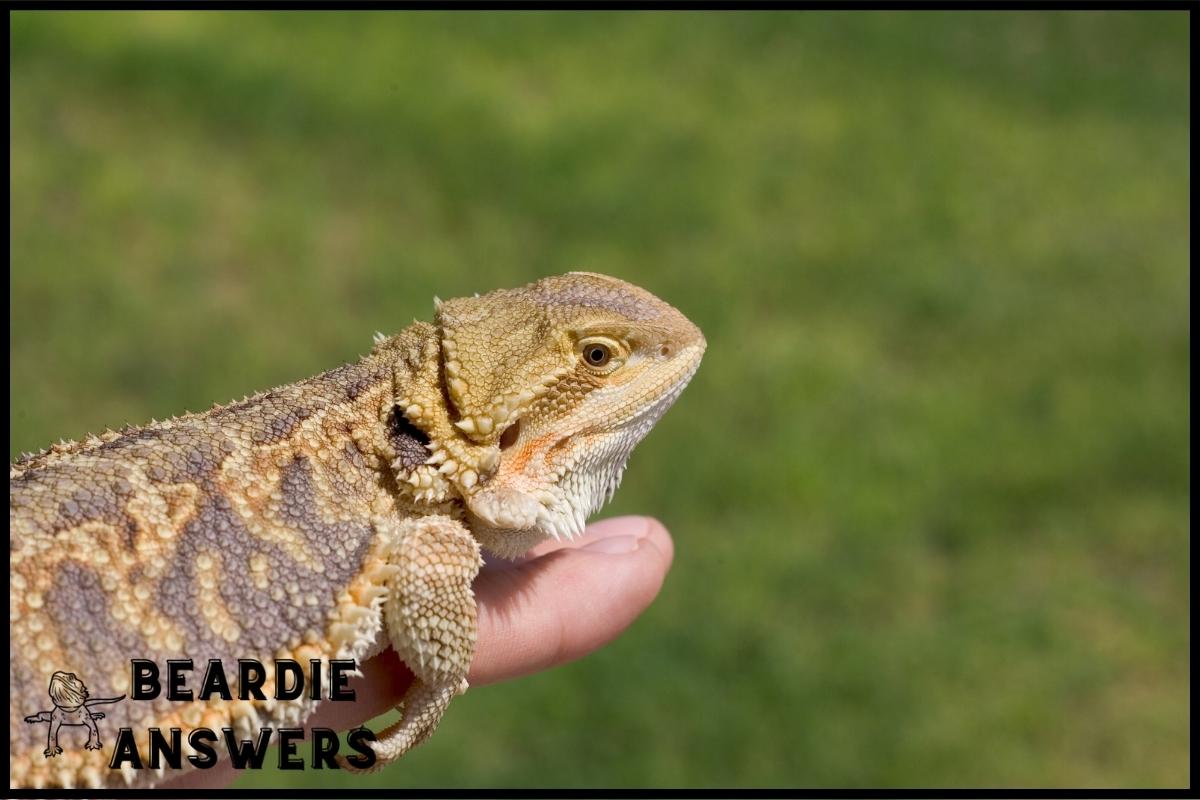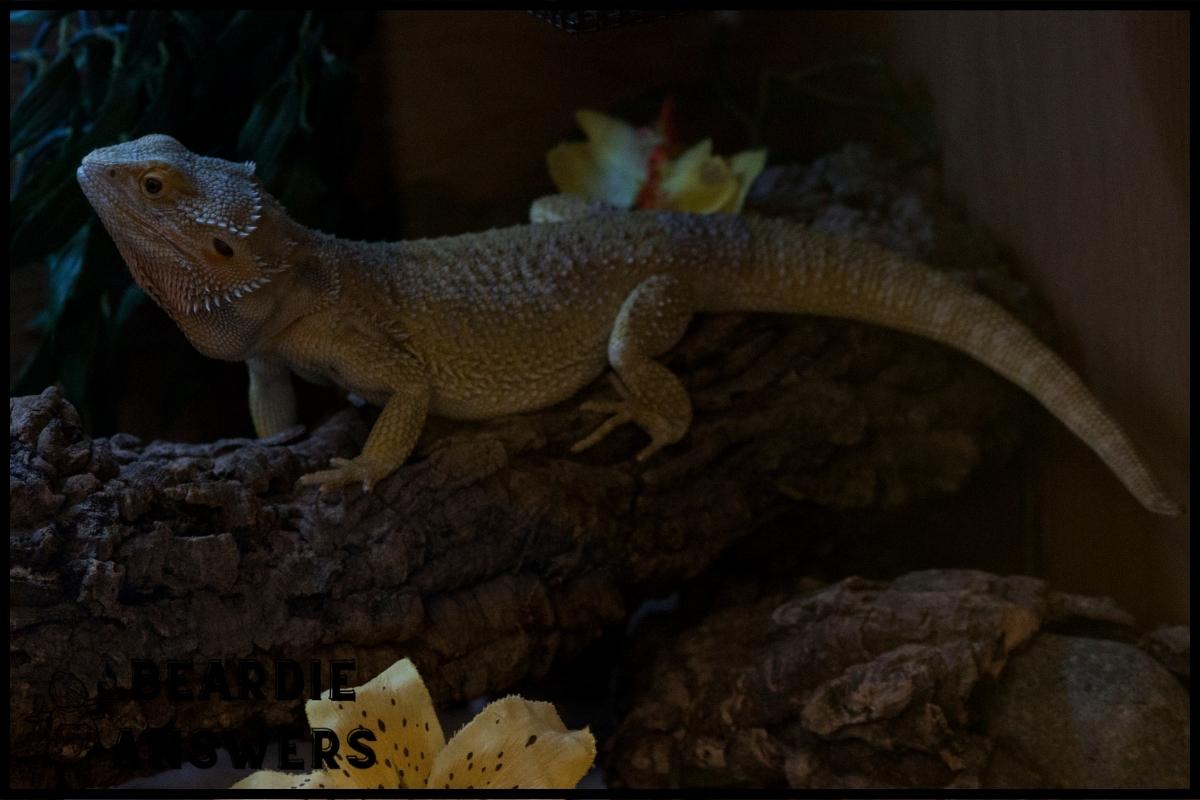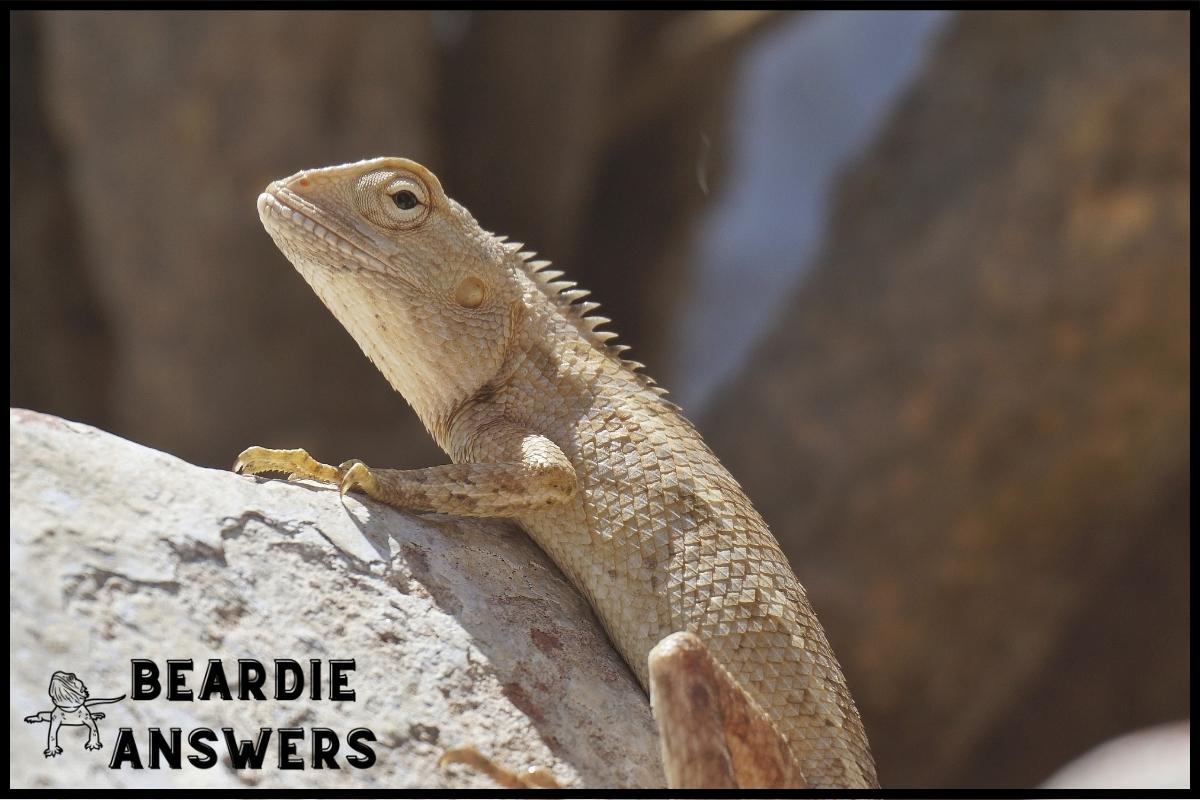[su_note note_color=”#eee”]
The black and red bearded dragon is a unique color morph of the popular pet lizard, the bearded dragon. It can be bred selectively to produce offspring with this striking color variation.
This article will explore the origins and care requirements for these beautiful dragons in more detail.
This rare breed of dragon should not be confused with other color variations such as citrus or hypo-citrus bearded dragons which feature yellow instead of red pigmentation.
In addition, there are several different types of hybridization techniques that can be used when breeding them in captivity.
We’ll discuss all of these topics so you can decide if owning one of these magnificent creatures is right for you!
What You'll Learn
Characteristics Of Black And Red Morph
The Black and Red Morph of the Bearded Dragon is an interesting color variant that has been selectively bred over time. These dragons require specific enclosure needs, such as temperature control and UVB lighting to provide the ideal habitat for them. Additionally, they go through regular shedding cycles that need to be monitored by their owner.
Their coloring can range from deep reds to black with orange or yellow accents on their stomachs and sides. They also have different mating habits than other beardies due to their unique gene pool. When properly cared for in a suitable environment, these morphs will thrive and show off their vibrant colors!
This breed has become increasingly popular in recent years due to its stunning visual appeal, but where did it come from? The next section delves into the history of breeding this spectacular creature.
History Of Breeding The Black and Red Morph
The vibrant colors of the black and red bearded dragon have captivated many reptile enthusiasts for centuries.
It is believed that this morph was first created thousands of years ago, through selective breeding practices and manipulating genetics. This ancient form of genetic engineering involved controlling temperature to manipulate color genes in order to create new varieties of morphs like the black and red bearded dragon.
Today, it is possible to engineer exotic dragons with some mastery over color genetics, thanks to advances in science and technology which allow us to pinpoint specific traits related to morphology and coloration in reptiles.
As a result, we now see more elaborate morph varieties than ever before – from striped ones to those adorned with yellow accents or spots – all made possible by combining the artistry of selective breeding with modern tools in genetics research.
Food Requirements
Bearded dragons’ dietary needs vary depending on their age, size and activity level. They require a nutritional balance of proteins, vegetables and occasional fruits to stay healthy and active. It is important to supplement their diet with things like crickets, worms, mealworms or small insects to provide essential vitamins and minerals.
Juvenile bearded dragons should be fed every day whereas adults can have one meal per day, however they may need more food if they become more active in the wild habitat.
When considering the proper habitat for your dragon it’s important to remember:
- Temperature requirements:
- Basking area – 95-105 degrees Fahrenheit
- Cool side – 75-85 degrees Fahrenheit
- UVB lighting: 10-12 hours/day
- Humidity levels must remain between 30%-50%
Having all these elements in place will ensure that your pet has enough energy for its daily activities.
Additionally, providing enrichment items such as rocks, logs or branches helps keep them mentally stimulated throughout the day.
Lastly, having multiple hiding spots provides security which keeps stress levels low while promoting overall health and well being.
Temperament
Black and red bearded dragons are generally friendly, social lizards that enjoy interacting with their owners. They usually take well to handling when done correctly, but it is important to remember to use caution while doing so as they can become stressed if handled too much or improperly.
When kept in captivity, they should be provided with an enclosure of at least 40 gallons, UV lighting for 8-12 hours per day, and a basking temperature between 85-90 F. All these factors contribute to the health and wellbeing of your pet dragon.
It’s also important to provide ample space for them to explore within their enclosure; this could include providing rocks, logs and other items for them to climb on or hide under. Additionally, you’ll need multiple hiding spots so that your dragon feels secure.
Providing adequate enrichment and stimulation will keep your dragon happy and healthy long term. With proper care and attention given to their environment including light exposure, temperatures, humidity levels and food sources your black and red bearded dragon can live a full life of up 10 years!
Moving forward it’s essential to understand how various illnesses may affect your pet reptile which leads us into our next section regarding health considerations.
Health Considerations
The sleek, black and red coat of the bearded dragon is a sight to behold. Its striking coloration is an alluring contrast between its fiery hues and midnight silhouettes – a unique combination that stands out among other dragons.
But while their appearance may be captivating, there are certain health considerations one should take when caring for these magnificent creatures.
From disease prevention to habitat needs and handling tips, there’s much to consider in order to keep your pet healthy and happy. To avoid potential ailments or infections, it’s important to find a reputable breeder who maintains high standards in breeding practices. Additionally, providing the right environment with proper temperature levels and humidity will help prevent any issues from arising.
Furthermore, implementing enrichment activities like climbing furniture or hiding spots can also improve the quality of life for your reptilian companion. Lastly, regular vet visits are essential for monitoring changes in behavior or physical condition as well as receiving vaccinations if needed.
Having knowledge about these matters can make all the difference when it comes to properly caring for black and red morphs. With that said, understanding how best to provide them with adequate nutrition and exercise requirements is just as critical for ensuring they stay active and strong throughout their lives.
Caring For Black And Red Morphs
Health considerations for bearded dragons is a key factor in their overall well-being and happiness. Now, let’s focus on caring specifically for black and red morphs.
Socializing is important with these creatures – they may enjoy interacting with each other or being handled by humans as long as it’s done carefully and slowly.
Shedding habits vary depending on the individual dragon, so you should keep an eye out to make sure that your pet isn’t having trouble shedding its skin.
Lighting needs are typically met through exposure to natural sunlight when possible, or artificial UV lamps if not available.
Enclosure size should accommodate space to move around freely while still allowing the animal to hide whenever desired.
When handling tips, it’s best to approach from behind and support them firmly yet gently under their belly – this will help them feel secure and reduce stress levels during interaction time.
These are just some of the helpful tips for keeping your Black/Red Morph Bearded Dragon happy and healthy!
Conclusion
In conclusion, black and red bearded dragons are a unique and beautiful color morph that can be selectively bred. They require the same basic care as any other species of bearded dragon, but they should have their own specialized diet to ensure optimum health. With proper care and attention, these majestic creatures will flourish in captivity, providing joy and companionship for many years.
Caring for them is like caring for an exotic flower: they need plenty of sun and warmth to grow strong, yet also need regular access to water and food so their body stays healthy. Of course, you’ll want to monitor your pet’s behavior closely; if anything seems out of place or concerning, reach out to an experienced herpetologist.
Overall, owning a black and red beardie is a rewarding experience – one that I’d highly recommend! With patience and dedication, you can create a strong bond with your pet while learning more about its fascinating biology along the way.

Hi! My name is Bryan, I am the “one behind the words” here are BeardieAnswers.com. I believe that providing quality care and nutrition is the best way to ensure the health of your pet. Every beardie is special and deserves the best care and attention. If you have questions about your bearded dragon, please don’t hesitate to ask! View My Full Author Page




